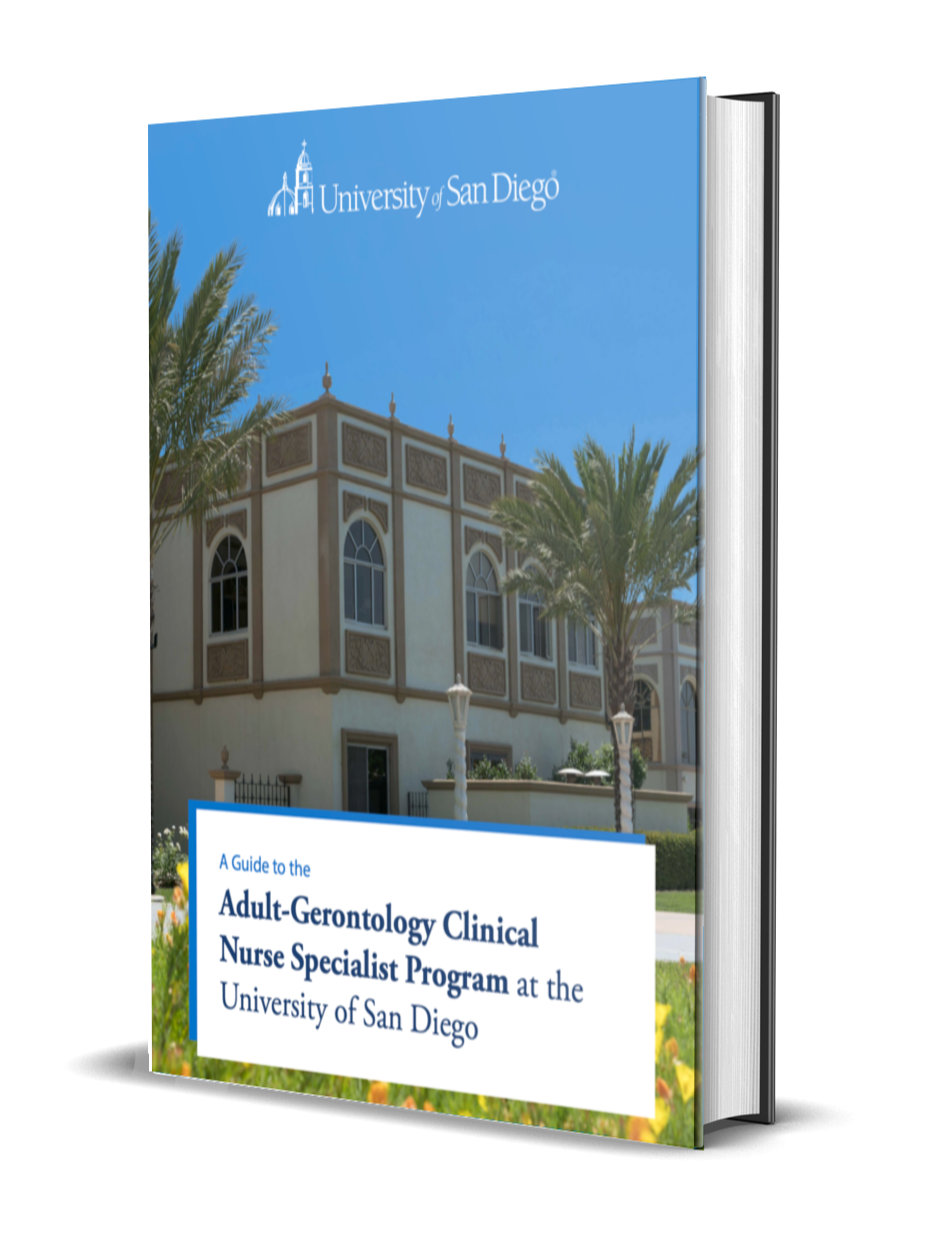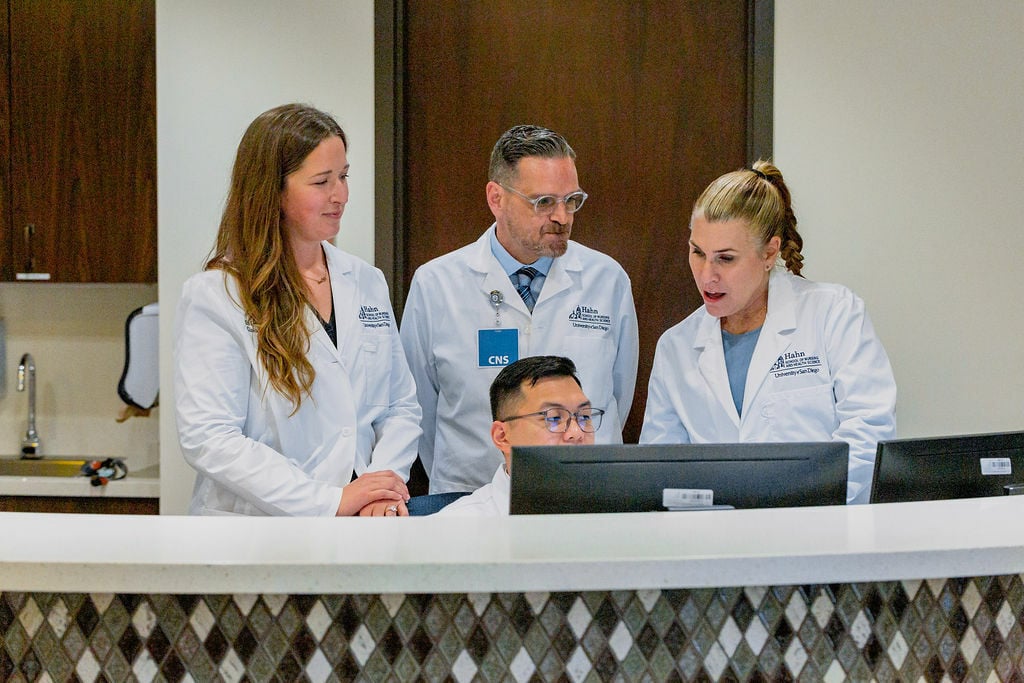
Discover the Benefits of a Nursing Degree From USD
The information in this blog post is for informational purposes only and is not intended to replace medical, financial, or professional advice.
Even before the COVID-19 pandemic began, the US healthcare system had significant issues with which to contend: an aging population, a rise in chronic conditions, and a large swath of the nursing workforce preparing for retirement—taking their wisdom and expertise with them—just to name a few.
None of that has changed. While our healthcare system has rapidly evolved in response to the pandemic, those foundational issues still bubble beneath the surface. COVID-19 had a way of exposing those underlying flaws in our system even more.
This blog discusses the lessons learned from the coronavirus pandemic and how they apply to the future of the health care industry. How do health care professionals expect care delivery change? How will it impact the field of nursing? And, in general, what will health care look like in the future?
Let’s explore.
1. Telemedicine is here to stay.
One of the most positive changes to come from the pandemic is how patients, providers, and payors have embraced telemedicine.
Telehealth is convenient, and it provides instant access to medical care. For those living in more rural areas—where there are fewer in-person options—that is key. Regardless of location, telemedicine creates more opportunities for patients to access primary care.
2. Nurses' roles in health promotion are set to expand.
Illnesses—and the access to quality health care needed to combat them—are not equally distributed across groups and communities. For example, people who live in areas with higher levels of air pollution are more likely to suffer from asthma, lung cancer, COPD, and other chronic illnesses.
COVID-19 highlighted these health inequities and acted as a forceful reminder that efforts to improve our healthcare system must also address the social determinants of health (SDOH). These are the conditions in the environments in which people live, learn, work, play, worship, and age that affect a wide range of health, functioning, and quality of life outcomes.
One way this will unfold is through technology. Health information and medical records are going electronic, which not only improves coordination of care across the care continuum but also gives providers a holistic view of their patients. In the next few years, we can also expect to see SDOH data integrated into these records, as well—and integrated into nursing practice.
Over the next decade, nurses will be trained to use and analyze this digital health data to identify trends in their patients or communities. AI and telehealth can assist them in connecting to health care networks, reaching people within their homes, and promoting well-being in the larger community.
3. Expect a rise in the demand for in-home care.
COVID-19 highlighted how ill-prepared nursing homes were to manage infectious disease epidemics. At the end of May 2020, of the 103,700 people who died from COVID-19, one-third of them were residents of nursing homes.
During this time, the burden of care disproportionately fell on the nursing staff. The nurses on the front lines at nursing homes felt that they were not provided with adequate personal protective equipment (PPE) and other necessary supplies. For the staff and patients alike, nursing homes became synonymous with danger.
In the future, we expect many consumers will opt for in-home care services for their aging parents or spouses. Nursing schools and other educational institutions must prioritize developing coursework that prepares nursing students to work in these environments.
4. Revamped nursing education programs will produce a more diverse, specialized workforce.
The future holds a more diverse workforce—nurses who have expertise in health equity—who have been trained in mental and behavioral health, SDOH, population health, working in underserved communities, and care for people with complex medical and/or social needs.
This will be incredibly important, considering the worsening physician and specialty shortages. Specialty areas like geriatrics, maternal health, school health, long-term care, primary care, public and community health, and behavioral health will lose caregivers in the next decade due to retirement.
Nursing schools will respond by providing coursework and clinical experiences in these settings, in addition to opportunities for care coordination across the continuum in school. Programs will also embed content on SODH into the curriculum, preparing students to understand and identify the social, economic, and environmental factors that alter health. Other learning experiences may include working with underserved populations in such settings as federally qualified health centers, rural health clinics, and IHS-designated sites.
5. Nurse burnout from the pandemic will lead to systemic changes.
Burnout and compassion fatigue from COVID-19 have swept through the nursing workforce and exposed the lack of institutional support for the wellness of nurses. In the future, nursing educators, employers, leaders, licensing boards, and organizations need to implement structures and systems to promote nurses’ health and well-being.
This starts with integrating overall health education into nursing schools. The curriculum must feature content that focuses on the importance of health and well-being, giving students the skills they need to find and create support systems and advocate for themselves while they practice. Schools also need to create mechanisms to protect the students most at risk for behavioral health challenges, especially those who may be experiencing economic hardships or those who feel unsafe because of bias or discrimination.
6. Nurses will have an expanded scope of practice.
At the beginning of the pandemic, lawmakers acted quickly to make changes to institutional policies, state laws, and federal laws in response to COVID-19, expanding providers’ scope of practice, telehealth eligibility, insurance coverage, and payment parity. Nurses and Nurse Practitioners (NPs) practiced to their highest skill levels. Nurses worked in new roles and adapted to their revised responsibilities along the way. Some pandemic nurses even traveled across state lines to COVID hotspots to practice.
Many health experts believe these measures need to be made permanent, especially in regard to the role of nurses.
Permitting nurses to practice to the full extent of their license and education will increase the types and amounts of health care services that can be provided for people who need care. After all, the evidence does not show that scope-of-practice restrictions improve the quality of care.
In addition to allowing registered nurses and NPs to practice to the top of their licenses, it is possible to see all states eventually transition to a country-wide nursing certification. State limitations inhibit nurses in their disaster response during public health emergencies. Advancing interstate compacts will also lead to standardizing care quality and building interprofessional collaboration and interstate cooperation.
7. The U.S. will begin expanding nursing's role in responding to global pandemics.
The creation of a National Center for Disaster Medicine and Public Health Emergency Response would strengthen and protect the nursing workforce during the response to public health emergencies and natural disasters. This would act as a central “hub” for providing leadership in education, training, and career development, ensuring a national nursing workforce prepared to respond to emergencies.
If attempted, this will require building a knowledge base of the nursing workforce through regulations, programs, research, and sustainable funding targeted specifically to disaster and public health emergency nursing. It also requires transformational change in nursing education and licensing examinations, among other areas.
Having nursing expertise involved in developing emergency response plans will help improve preparedness for the events, quality of care for patients, nurses’ well-being, and support for families.
The Future of Health Care Depends on Nurses
Studies have shown that the US spends more money on healthcare than other developed countries with poorer health outcomes. If there is no action taken, health care costs will keep ballooning, health inequities will continue worsening, and accessing vital health care services will become more and more difficult.
Empowering nurses will elevate the overall level of care in this country. After all, the nursing workforce is the largest among all the health care professions—nearly four times the size of the physician workforce. Whether on the front lines, providing care, or in classrooms, teaching the next generation, the health care industry needs to recognize nursing leadership and turn expertise into action.
Nurse Leaders are Needed
You may have been born with the compassion needed for nursing, but leadership is learned. The skills you need to help shape the future of health care can be honed at the University of San Diego School of Nursing. The Hahn School of Nursing and Health Science has a 40-year tradition of producing empowered nurses. Our advanced degrees will prepare you for the changes ahead in health care.
Our Master of Science in Nursing degree offers three tracks for nurses who want to hone their skills in a specialization: Executive Nurse Leader, Nursing Informatics, and Adult-Gerontology Clinical Nurse Specialist. For those interested in translating science into clinical practice, practicing at the highest level of proficiency, and becoming a change-maker in nursing, explore the USD Nursing Doctorate of Nursing Practice degree and the several paths of study therein. The Doctor of Philosophy in Nursing program transforms nurses into scientists.
Discover all the programs offered at the Hahn School of Nursing and Health Science!
The information provided by USD’s Hahn School of Nursing and Health Science is for informational purposes only and is not intended to replace professional medical or financial advice. This includes, but is not limited to, blog posts, eBooks, webinars, emails, graphics, social media posts, and other content. Always seek the guidance of your physician or a qualified medical or financial professional.
A Guide to the University of San Diego's Adult-Gerontology Clinical Nurse Specialist Program
The University of San Diego's nursing program ranks among the best in the nation. But that's not the only reason future students walk through our doors to pursue one of our graduate degrees. Download our guide for an in-depth look at the Adult-Gerontology Clinical Nurse Specialist program and learn how our rich heritage of excellence in nursing education can help you achieve your academic and professional goals.
GET THE GUIDE







